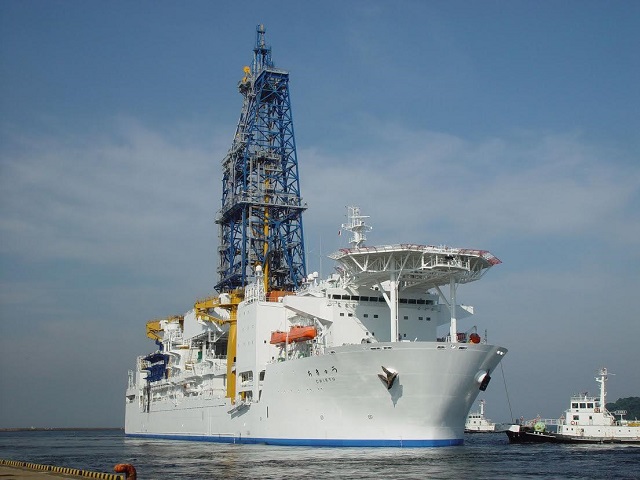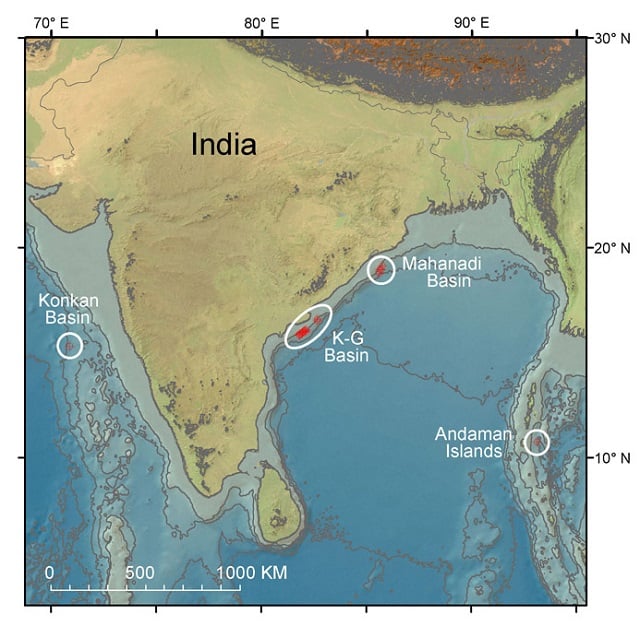Gas Hydrates Found in Indian Ocean
The Government of India has discovered large, highly enriched accumulations of natural gas hydrate in the Bay of Bengal. This is the first discovery of its kind in the Indian Ocean that has the potential to be producible.
Natural gas hydrates are a naturally occurring, ice-like combination of natural gas and water found in the world’s oceans and polar regions. The amount of gas within the world’s gas hydrate accumulations is estimated to greatly exceed the volume of all known conventional gas resources.
The discovery is the result of the most comprehensive gas hydrate field venture in the world to date, made up of scientists from India, Japan and the United States. The team was led by the Oil and Natural Gas Corporation (ONGC) of India on behalf of the Ministry of Petroleum and Natural Gas India, in cooperation with the U.S. Geological Survey, the Japanese Drilling Company, and the Japan Agency for Marine-Earth Science and Technology.
The research expedition, called the Indian National Gas Hydrate Program Expedition 02, is the second joint exploration for gas hydrate potential in the Indian Ocean. The first expedition, also a partnership between scientists from India and the United States, discovered gas hydrate accumulations, but in formations that are currently unlikely to be producible.
The drilling platform was the research vessel D/S Chikyu, operated by the Japanese Drilling Company. During the expedition, 42 holes were completed in 147 days, at water depths ranging from 1,519 to 2,815 meters, with sub-seafloor completion depths ranging from 239 to 567 meters below the sea floor.
 Although it is possible to produce natural gas from gas hydrates, there are significant technical challenges, depending on the location and type of formation. Previous studies have shown that gas hydrate at high concentrations in sand reservoirs is the type of occurrence that can be most easily produced with existing technologies.
Although it is possible to produce natural gas from gas hydrates, there are significant technical challenges, depending on the location and type of formation. Previous studies have shown that gas hydrate at high concentrations in sand reservoirs is the type of occurrence that can be most easily produced with existing technologies.
As such, the second expedition focused the exploration and discovery of highly concentrated gas hydrate occurrences in sand reservoirs. The gas hydrate discovered during the second expedition are located in coarse-grained sand-rich depositional systems in the Krishna-Godavari Basin and is made up of a sand-rich, gas-hydrate-bearing fan and channel-levee gas hydrate prospects. The next steps for research will involve production testing in these sand reservoirs to determine if natural gas production is practical and economic.
 There are two main technologies that have been successfully trialled to free gas from similar deposits. These are depressurising or injecting CO2 to replace the gas in the icicles. However, the technology is still in pilot stage. Japan has stated plans to start commercial gas production from its offshore hydrates from 2020 after commercial testing expected to be complete by 2018.
There are two main technologies that have been successfully trialled to free gas from similar deposits. These are depressurising or injecting CO2 to replace the gas in the icicles. However, the technology is still in pilot stage. Japan has stated plans to start commercial gas production from its offshore hydrates from 2020 after commercial testing expected to be complete by 2018.
ONGC plans to start pilot production from its discovery from 2017. Preliminary work is now underway.

